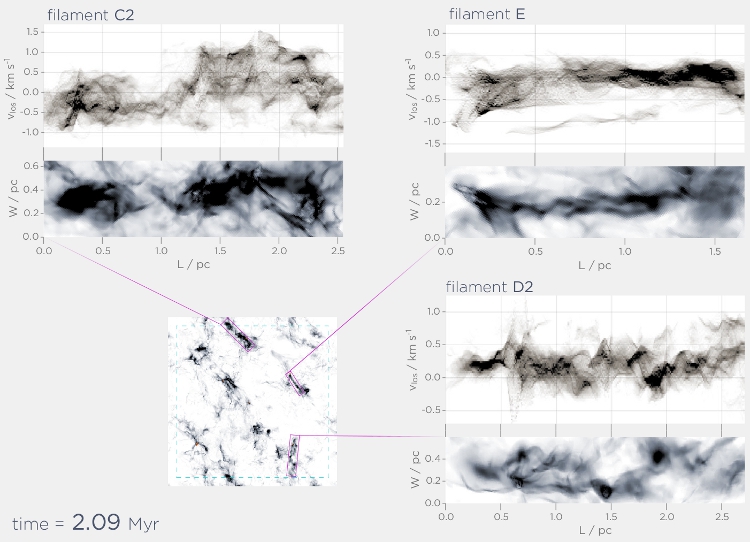| EPoS Contribution |
|
The formation of filamentary bundles in turbulent molecular clouds
Nickolas Moeckel LMU, Munich, DE | |
| The classical picture of a star-forming filament is a near-equilibrium structure, with collapse dependent on its gravitational criticality. Recent observations have complicated this picture, revealing filaments as a mess of apparently interacting subfilaments, with transsonic internal velocity dispersions and mildly supersonic intra-subfilament dispersions. How structures like this form is unresolved. Here we study the velocity structure of filamentary regions in a simulation of a turbulent molecular cloud. We present two main findings: first, the observed complex velocity features in filaments arise naturally in self gravitating hydrodynamic simulations of turbulent clouds without the need for magnetic or other effects. Second, a region that is filamentary only in projection and is in fact made of spatially distinct features can displays these same velocity characteristics. The fact that these disjoint structures can masquerade as coherent filaments in both projection and velocity diagnostics highlights the need to continue developing sophisticated filamentary analysis techniques for star formation observations. | |
 | |
| Caption: Surface density and line-of-sight velocity structure of filaments in a simulated turbulent molecular cloud. | |
| Collaborators: A. Burkert, LMU, Germany |
Key publication
Suggested Sessions: Filaments |

